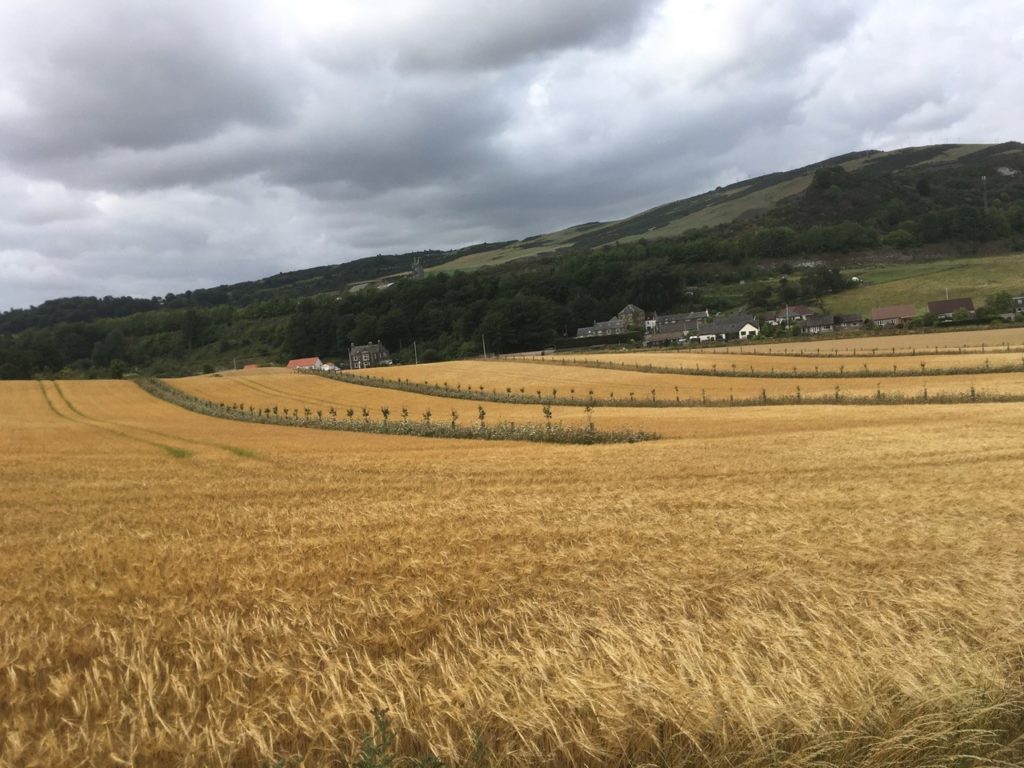Branching out into Agroforestry: Make trees your next crop (FWN 33)
22 October 2019Agroforestry is an often-misunderstood term but, put simply, it means farming with trees. Farmers may worry that planting trees means giving up productive land and losing the basic payment but it doesn’t. In fact, trees can improve a farm business in many ways.
What does it all mean?
Agroforestry: Farming with trees. This can mean anything from shelterbelts, and timber plantations, to hedgerows or fully integrated farming systems, where livestock and/or arable crops and trees are interdependent.
Silvo-pasture: Grazing animals under trees. The animals enrich the soil while the trees improve the soil’s capacity to hold water and nutrients while providing shelter and fodder for the animals.
Silvo-arable: Crops are grown beneath trees, often in rows which are large enough for a tractor to tend to the crops without damaging the trees (known as alley-cropping). The trees shelter the crops, enrich the soil and increase the invertebrate life, including pollinators, above and below ground.
5 key ways trees can improve your farm business
Making the most of what you’ve got: There’s no need to buy more land to branch out. Trees use the soil layers beneath those your standard crops use, and make better use of airspace above your farm, as well as sun and water. This is farming in 3D, what Nuffield scholar Stephen Briggs calls “cropping the extra dimension.” Trees can also utilise unproductive, boggy ground.
Save on livestock costs: Well-placed trees provide valuable shelter for livestock, and can reduce wind speeds by 30-50%. Keeping animals warm when it’s cold and shaded when it’s hot) improves their health and productivity. With good management, woodland grazing can extend the season, keeping your animals outside for longer and significantly reducing housing costs. Certain trees, such as willow and aspen, can also provide additional nutrition and health benefits as forage.
Protect your arable crops: Used in the right way, trees can protect and boost your arable yield. They can shield crops from winds and temperature changes, keep irrigation needs to a minimum, as well as prevent flooding, nitrogen loss and soil degradation.
Help your environmental credentials: Trees are a fantastic way to enhance biodiversity on your farm, provide habitat for wildlife, and intercept pollutants. They absorb carbon and turn it into timber, balancing out greenhouse gas emissions from other areas of your farm business. And what’s good for the environment can be good for you – keeping nutrients where you need them and increasing natural pest and disease control.
Providing an additional income source: High-value timber provides you with a longer-term crop that can be an investment for the next generation. Trees can provide wood fuel to use on the farm or sell. Alley-cropping with fruit trees can add another income stream, for example, apples, and creating diversification options like juice or cider production.
Getting started doesn’t have to cost, and you keep your basic payment. There is a range of grants available from Scottish Forestry to cover both capital and maintenance costs. Grants are paid after the trees are planted so you may need a loan or o verdraft facility to cover the upfront costs. Most banks are keen to support tree planting with the assurance of an agreed grant contract. The Woodland Trust can also provide help for smaller-scale projects. Download the Soil Association’s free Agroforestry Handbook here.
verdraft facility to cover the upfront costs. Most banks are keen to support tree planting with the assurance of an agreed grant contract. The Woodland Trust can also provide help for smaller-scale projects. Download the Soil Association’s free Agroforestry Handbook here.
A number of case studies accompany this article – please download a copy of Farm Woodland News to read them.
Lyn White and Megan Welford, Soil Association Scotland, for Farm Advisory Service – Farm Woodland News.
This article is taken from the Autumn 2019 edition of the Farm Woodland News. You can download the entire edition and sign up to ensure you receive the latest copy as it is published by using this link.
Sign up to the FAS newsletter
Receive updates on news, events and publications from Scotland’s Farm Advisory Service

